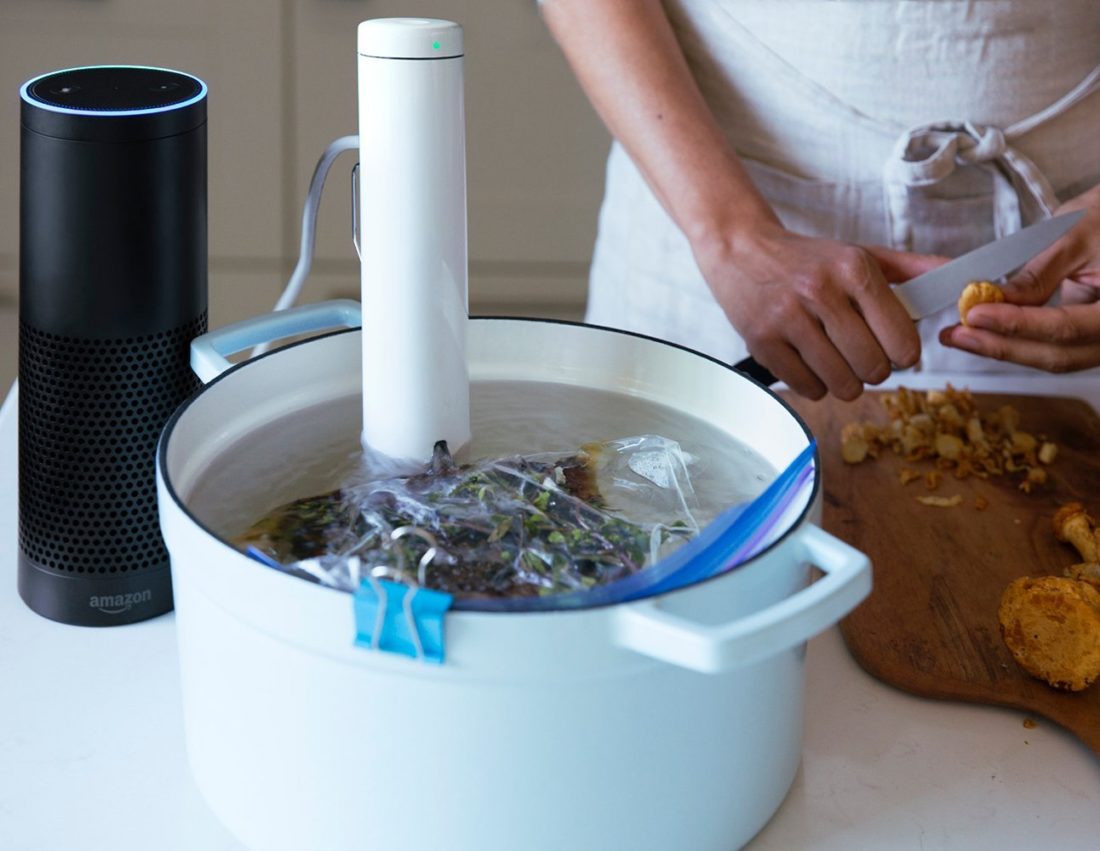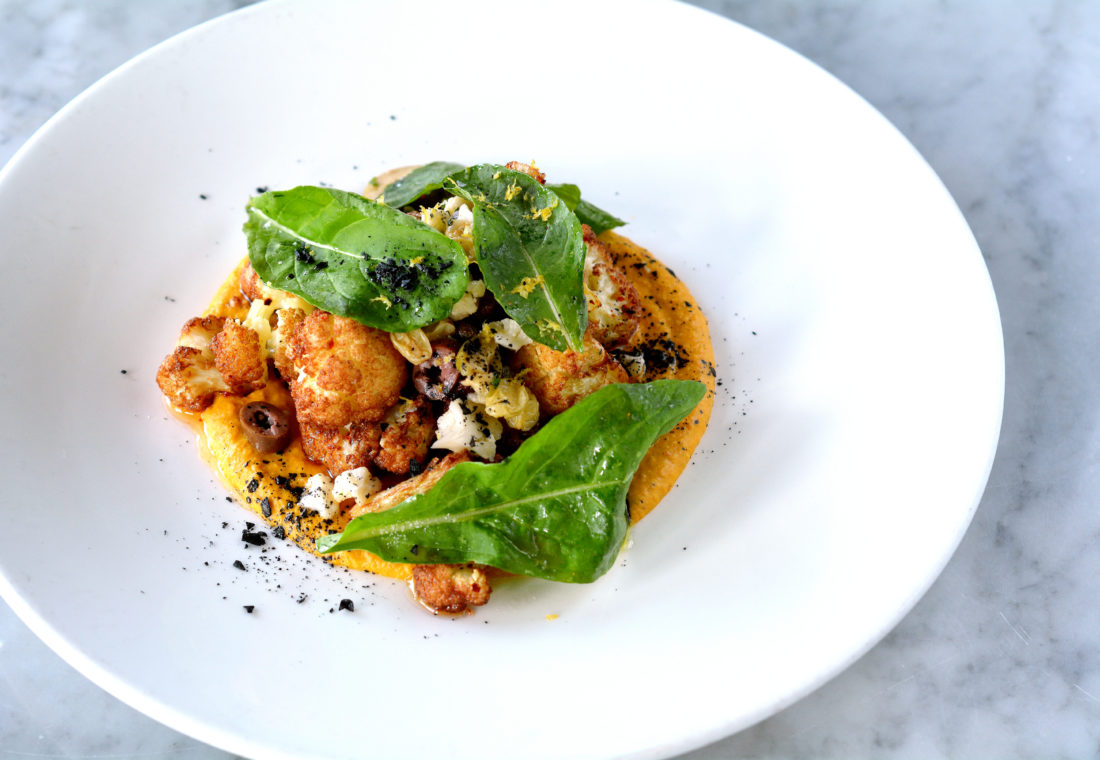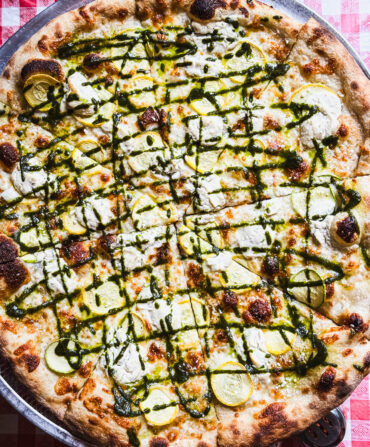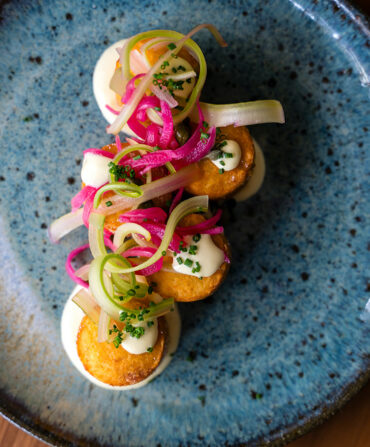A large pot of water might not strike most people as the right vessel for cooking rosy-red medium-rare steak or perfectly pull-apart pork butt. But for the growing number of home cooks who are embracing sous vide—a method where food is vacuum-sealed, immersed in water, and gradually heated to a pre-set temperature with a circulator tool—it makes perfect sense.
“When you sous vide something, you’re making it more tender. You’re breaking it down,” says Morgan McQueen, of Ted’s Butcherblock in Charleston, South Carolina, where customers can have their preferred cuts seasoned and vacuum-sealed before leaving the shop. “It’s great for cheaper cuts.” The technique is also perfect for summer days in the South; instead of turning on the oven and heating the house for hours or standing over a flaming grill, simply fill a Dutch oven or stock pot with water, and drop in a circulator that will cook the food by keeping the water at a consistent temperature. We like the Joule Sous Vide for its small size and simplicity; once you’ve connected it to your phone via Bluetooth or Wi-Fi, the device is intuitive to use. Choose your preferred internal temperature, and the Joule will calculate the time needed to cook a cut based on its weight. You can also try one of dozens of built-in recipes, too.

The Joule Sous Vide.
Steak is probably sous vide’s greatest hit: once the cut is cooked through, a quick sear will take it across the finish line. But this versatile kitchen tool can do so much more—if you’re willing to experiment. “People can be a little scared of sous vide. Research it as much as you can, and then go for it,” McQueen says. “It’s all about trying new things and not being afraid. I mean, worst case scenario, you’re ordering pizza.”
We’re all about trying new things in the kitchen, too, so we asked eight Southern chefs how they use sous vide in their home kitchens. From pulling off a perfect holiday meal to feeding a newborn, see what they’re cooking (and put down the pizza menu—dinner’s going to be fine).
Make chicken tender
“I use sous vide technique with soy-glazed chicken thighs—it keeps them moist and tender. Then, when you bring them up to temp on the grill, you can get that nice char flavor without the meat getting tough.”
—Duane Nutter, executive chef of Southern National in Mobile, Alabama
Perfect pork chops
“Brine the chops for two days, sous vide them to 138 degrees, and then sear them in a cast-iron pan with a pork rub made of smoked paprika, fennel seed, black pepper, and coriander. Perfect every time.”
—James London, executive chef of Chubby Fish in Charleston, South Carolina
Keep green vegetables bright, vibrant green
“We’ve started using sous vide more often for cooking vegetables because it not only cooks them perfectly, but also keeps green veggies bright and vibrant and white vegetables stunningly white. Our method: We simply toss the produce with extra virgin olive oil, salt, and fresh herbs, place them in a bag, and cook them in a water bath with a circulator. And, voila—perfect cooked veggies.”
—Mel Toledo, executive chef of Foundation Social Eatery in Roswell, Georgia
Try it as a smoker substitute
“Tending a smoker for good barbecue is a huge commitment—a pitmaster must man the smoker for hours and hours with vigilance. With sous vide cooking, it’s possible for a home cook to get a similar effect in a fraction of the time. Rub and smoke a pork butt using your favorite wood for just an hour at 200-225 degrees, chill it, and then seal it in a vacuum bag with a half cup of cider vinegar. From here, you just need set your immersion circulator to 176 degrees and submerge the sealed pork butt for 12 hours. The finished product is a tender, smoky meat similar to that of a slow-smoked pork butt. The benefit here versus doing the same method in a slow cooker is that the meat loses no moisture during the process.”
—Andrew Peterson, executive chef of La Tavola in Atlanta, Georgia
Infuse honey with sweet heat
“We take local honey from the farmers market and combine it with Calabrese chiles and sous vide the mixture at 140 degrees for eight hours. It’s super gentle, so the honey retains its floral notes. I like to toss the honey with our roasted cauliflower dish, but it can be a great accompaniment to charcuterie and cheese, too.”
–Bobby Benjamin, executive chef and co-owner of Butchertown Grocery in Louisville, Kentucky

Photo: Courtesy of Butchertown Grocery
Roasted cauliflower with chile-infused honey from Butchertown Grocery.
Eighty-six Thanksgiving stress
“I use sous-vide at home to make the perfect turkey breast for Thanksgiving. I add a little duck fat and sage to bag and cook it gently. Once done, I fire up my Big Green Egg and add that last little bit of smoke and crispness to the skin. It definitely makes the day a little less stressful as it is impossible to over-cook.”
—Matthew Basford, executive chef of Canoe in Atlanta, Georgia
Serve up adorable individual desserts
“Use your favorite pie filling to make individual custard desserts in Mason jars. Set the circulator to 176 degrees, and divide filling among jars. Place lids on the jars, set them in the bath, and cook for one and a half to two hours. (For pumpkin pie, one-and-a-half. For cheesecake, two hours.) Remove jars from bath, remove lids, and place in refrigerator to chill for at least four hours. Garnish with your favorite toppings: Whipped cream, fruit, whatever.”
—Michelle Weaver, executive chef of Charleston Grill in Charleston, South Carolina
It can even help feed the baby
“At home, our first use of the circulator post-baby was specifically for breastmilk. It was a no brainer: set the bath at specific temperature, then, about 15 minutes before feeding, just toss in a bag. Once we made the transition to pureeing, the benefits were even more outstanding. We make our own purees, vacuum and freeze, then select all the meals of the day and hold under circulation.”
–Chef Matt Marcus of Watershed in Atlanta, Georgia








